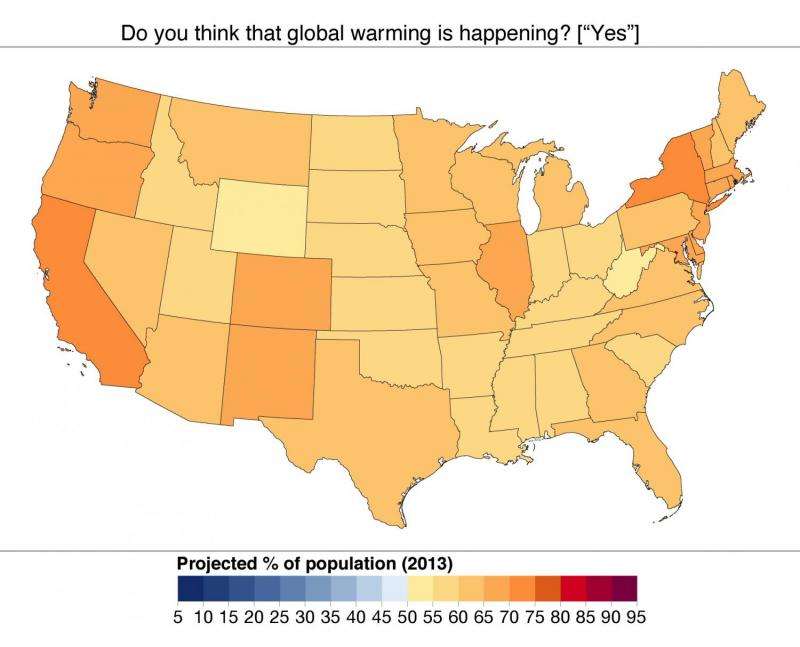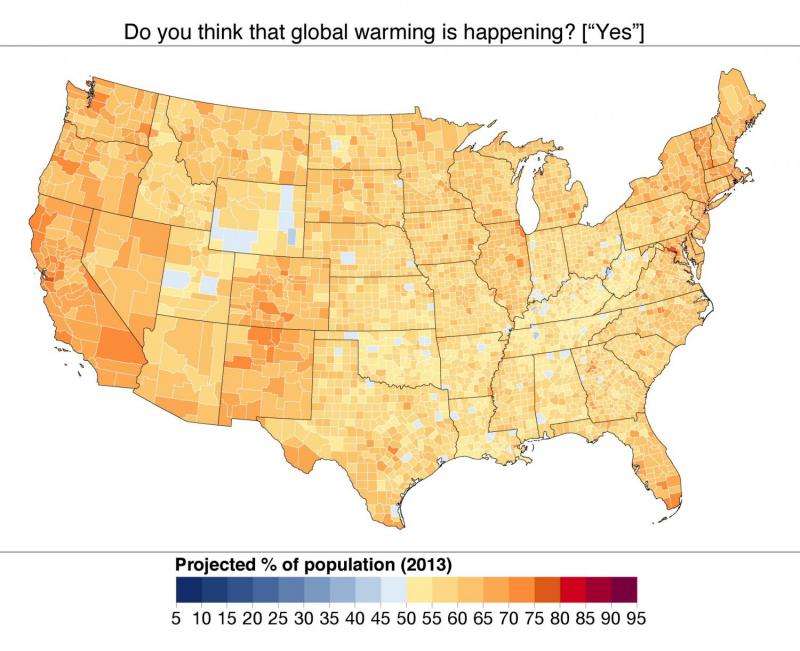What do Americans really think about climate change?

Americans waste little time or ink debating global warming, but what do they really think about it in Peoria? Or Los Angeles? Or any other town, big or small, across the 50 states?
"My colleagues and I wanted to find out how people feel at the local level," says Peter Howe, assistant professor of human-environment geography in Utah State University's Department of Environment and Society and the USU Ecology Center.
With Yale University researchers Matto Mildenberger, Jennifer Marlon and Anthony Leiserowitz, Howe describes a new statistical model that accurately estimates public climate change opinion in the April 6, 2015 issue of Nature Climate Change.
"The idea was to develop a tool to map public opinion to get a sense of geographic variation across the country," says Howe, lead author on the paper. "Decisions about how to respond to issues such as climate change can happen at the state and local level as well as the national level, so we wanted to find out what people think about the issue at these levels."
The new model estimates opinion and support in all 50 states, 435 congressional districts and more than 3,000 counties across the nation. It's based on survey data collected from more than 12,000 people across the nation.
"Most of the action to reduce carbon pollution and prepare for climate change impacts is happening at the state and local levels of American society," Leiserowitz says. "Yet elected officials, the media, educators and advocates currently know little about the levels of public and political will for climate action at these sub-national levels."

State and local surveys are costly and time-intensive, the researchers say, and most public polling is only done at the national level. The new model, for the first time, reveals the full geographic diversity of American public opinion.
"A project like this has never been done at this scale before," Howe says. "It allows us to visualize the data and look for patterns."
The model's results enabled the researchers to construct the interactive, online tool "Yale Climate Opinion Maps" at environment.yale.edu/poe/v2014/ , which allows users to explore public opinion in geographic detail.
The research was supported by the Skoll Global Threats Fund, the Energy Foundation, the 11[sup]th[/sup] Hour Project, the Grantham Foundation for the Protection of the Environment and the V.K. Rasmussen Foundation.
More information: Geographic variation in opinions on climate change at state and local scales in the USA, Nature Climate Change, DOI: 10.1038/nclimate2583
Journal information: Nature Climate Change
Provided by Utah State University















